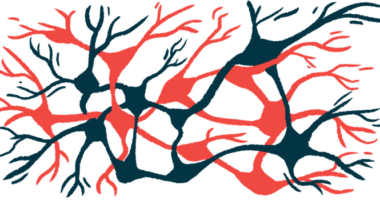Plant Compound of Pea Family Eases Parkinson-like Symptoms in Mice

Kurarinone, a compound derived from a plant in the pea family and part of traditional Chinese medicine, was found to ease Parkinson-like behaviors in a mouse model of Parkinson’s disease.
This compound can lessen neuroinflammation, or inflammation in the brain, by targeting soluble epoxide hydrolase (sEH), an enzyme that regulates several molecules associated with inflammation, blood pressure, and pain, its researchers noted.
“We hope that the natural herbal medicine will offer some relief from Parkinson’s disease,” Cheng-Peng Sun, a professor at Dalian Medical University in China and the study’s lead researcher, said in a press release.
Additional studies are needed to determine kurarinone’s safety and efficacy as a treatment, the scientists added.
The study, “Kurarinone Alleviated Parkinson’s Disease via Stabilization of Epoxyeicosatrienoic Acids in Animal Model,” was published in the Proceedings of the National Academy of Sciences (PNAS).
Neuroinflammation in Parkinson’s contributes to damaging neurons that secrete dopamine, a chemical messenger (or neurotransmitter) responsible for communication between nerve cells. Loss of these neurons causes problems in movement, such as tremors, rigidity, and poor balance.
Sophora — the name for a pea-flowered tree — includes 45 species of plants in the pea family found in several geographical locations, such as southern Asia, Australasia, western South America, and the western United States. Kurarinone is extracted from the dried root of Sophora flavescens, a species used for centuries in medicines in China.
Scientists there, working with researchers at the University of California, Davis (UC Davis), with expertise in enzyme inhibitors of inflammation — including soluble epoxide hydrolase — evaluated the neuroprotective effects of Sophora flavescens in a mouse model of Parkinson’s. Disease-like symptoms are induced in these mice through a chemical, MPTP, that is toxic to dopamine-producing neurons.
Treatment with kurarinone was found to ease behavioral deficits in the animals and evidence of neurotoxicity in their dopamine-producing neurons, the researchers reported. Neuroinflammation induced by the chemical’s use was also attenuated by suppressing microglia activation. Microglia, a type of nerve cell, are important in immune system defense against infection in the central nervous system, but they can turn toxic when overly activated.
Results suggested that kurarinone exerted its anti-inflammatory action by binding to and suppressing the activity of the soluble epoxide hydrolase enzyme.
Importantly, kurarinone did not provide extra protection against Parkinson’s in mice engineered to lack the gene responsible for producing sEH, further supporting soluble epoxide hydrolase as “a key target of kurarinone in the treatment of PD [Parkinson’s disease],” the researchers wrote.
“We have known for a number of years that the soluble epoxide hydrolase inhibitors, now in human safety trials, are active in reducing the development of Parkinson’s disease in several rodent models,” said Bruce Hammock, a study author and a professor at UC Davis with a joint appointment the department of entomology and nematology and the UC Davis Comprehensive Cancer Center. The sEH inhibitor used was discovered in Hammock’s lab at UC Davis, the university reported.
“The evidence for this is quite strong,” Hammock said. “Certainly, Parkinson’s disease is one of our targets for the sEH inhibitors, but the regulatory path is slow and expensive. This path becomes much faster for a natural product, so the discovery of this natural product from Cheng-Peng’s laboratory potentially offers relief to patients far faster than a classical pharmaceutical.”
Kurarinone, he added, also “provides a new model for the design of still more active compounds to block the neuroinflammation associated with multiple neurodegenerative diseases where sEH inhibitors have shown efficacy in rodent models, including Alzheimer’s,” Hammock added.
“These findings presented in this paper help to solidify the candidacy of sEH as a key player of PD pathogenesis via neuroinflammation, underscoring the role of [soluble epoxide hydrolase] inhibitors as a new class of anti-neuroinflammatory pharmaceuticals treating neurodegenerative disorders” like Parkinson’s, said Lin Zhang, PhD, a neurologist with the UC Davis Health System who was not involved with this study.
Researchers now plans to screen related plants for similar compounds based on the structure of kurarinone.







